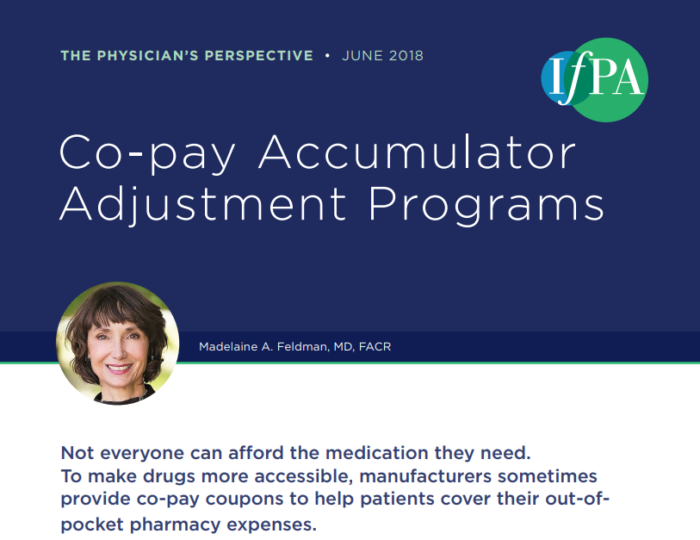“Not everyone can afford the medication they need,” opens a new policy brief from the Institute for Patient Access. Co-pay coupons are one source of financial support for patients. Issued by drug manufacturers, co-pay coupons reduce patients’ out-of-pocket cost. They also help patients meet their annual deductible.
Unless their insurer uses a co-pay accumulator program.
IfPA’s latest brief, “Co-pay Accumulator Adjustment Programs,” provides a sobering explanation of the impact these programs have on patients. Accumulator programs prevent co-pay coupons from counting toward a patient’s annual deductible, often without the patient’s knowledge. Patients may then be surprised at the pharmacy when, after several months, their coupon has been used up and they find that they owe their entire deductible.

The situation forces patients to choose between two undesirable options: paying hundreds, even thousands of dollars, for their medication – or walking away without it. In time, unmanaged diseases lead to worse health outcomes, emergency care and preventable hospitalizations, all of which are also costly to patients with conditions like cystic fibrosis, hepatitis, rheumatoid arthritis or cancer.
Authored by Madelaine A. Feldman, MD, FACR, the paper explains how pharmacy benefit managers use terms such as “benefit plan protection program” or “out-of-pocket maximum calculation process” that distort how accumulator programs affect patients. These programs also allow pharmacy benefit managers to “double-dip.”
“The drug’s manufacturer fulfills the patient’s deductible once through the co-pay coupon; then the patient fulfills it a second time out of his or her own pocket,” the paper points out.
The brief outlines potential policy approaches to address co-pay accumulator programs, including:
- Stipulating co-pay coupons can be used only if the patient receives credit toward his or her annual deductible.
- Helping patients pay for their prescription directly through the manufacturer’s need-based support program.
- Raising the value of co-pay coupons to cover a year’s worth of treatment.
- Reimbursing the patient for the prescription deductible.
- Letting patients use a debit card provided by the manufacturer.
“Each of these approaches is worth considering,” Dr. Feldman advises, “but not all are feasible.” She adds, “some plans have already implemented strategies to circumvent a few of the proposed solutions,” essentially taking them off the table.
As the use of accumulator programs increases, so too will the number of patients who struggle to access the medication they need. That is why policymakers need to work quickly toward identifying an effective solution.
For more, read “Co-pay Accumulator Adjustment Programs.” In addition to the policy brief, the Alliance for Patient Access has a video and an infographic about co-pay accumulators.

